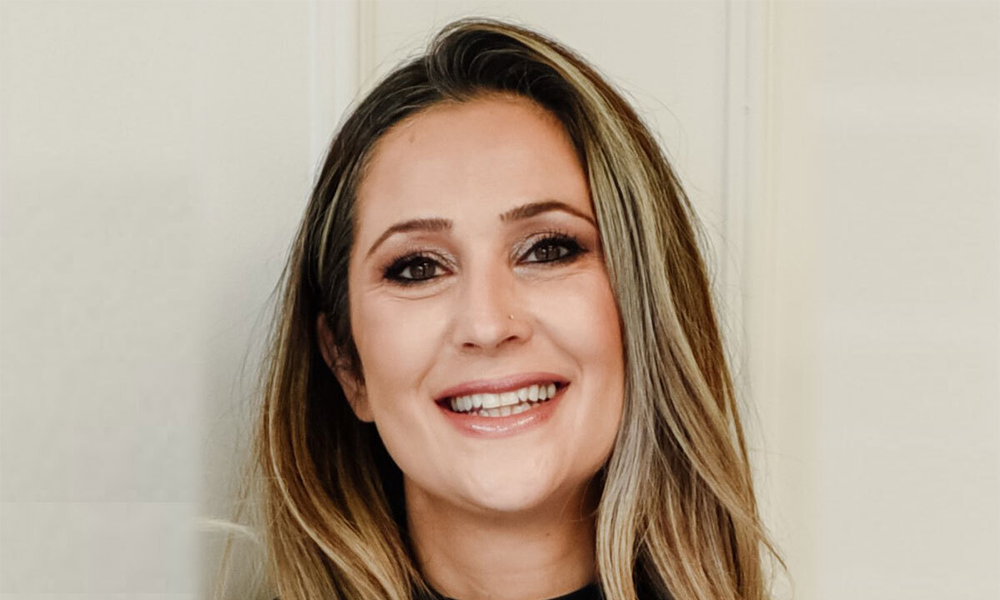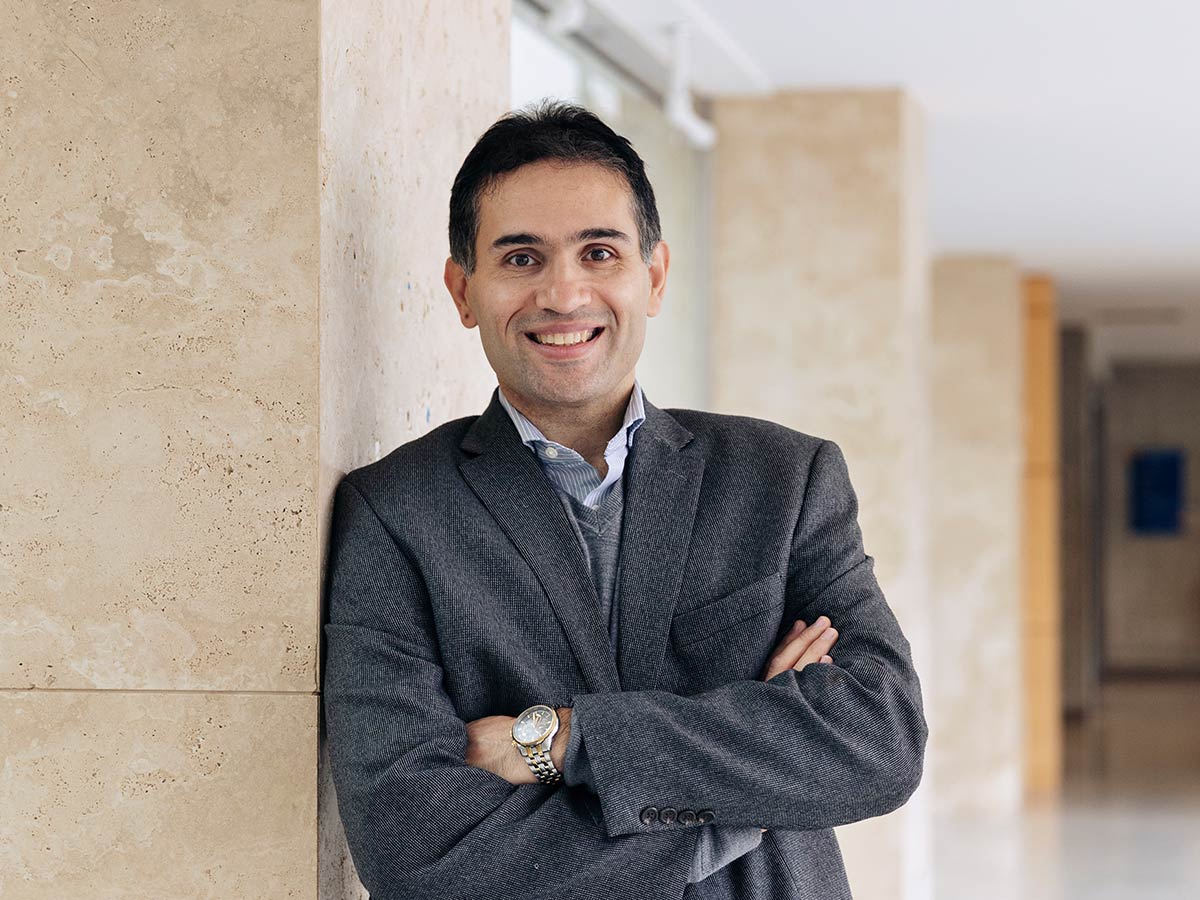Research Chairs
Research Chairs are at the centre of the research being done at the Faculty of Engineering and Architectural Science (FEAS). Several faculty members hold research and industrial sponsored chairs, bringing novel approaches to pressing problems while also supporting high-impact training opportunities.

The Faculty of Engineering and Architectural Science (FEAS) is home to nine prestigious Canada Research Chairs (CRCs). A federal government initiative, the CRC program is part of a national strategy to make Canada one of the world's top countries in research and development. It invests approximately $295 million per year to attract and retain a diverse cadre of world-class researchers, and to reinforce academic research and training excellence in Canadian postsecondary institutions.
There are two types of Canada Research Chair positions: Tier 1 and Tier 2. Tenable for seven years and renewable once, Tier 1 chairs are reserved for outstanding researchers acknowledged by their peers as world leaders in their fields. For each Tier 1 chair, the institution receives $200,000 annually for seven years. Tier 2 chairs are tenable for five years and renewable once. They are reserved for exceptional emerging researchers, acknowledged by their peers as having the potential to lead in their field. For each Tier 2 chair, the institution receives $100,000 annually for five years.
Our FEAS researchers have been awarded CRCs for their aims to improve Canada’s depth of knowledge and quality of life, strengthen our international competitiveness, and help train the next generation of highly skilled people through student supervision, teaching, and the coordination of other researchers' work.

Dr. Mohammadreza Arani
Tier 2 (2021 - 2026)
CRC in Smart Grid Cyber-Physical Security
Mohammadreza Arani’s research focuses on developing new models and controls to ensure smart power grids are secure, sustainable and resilient. His work explores the growing availability of renewable and clean energy sources and expanding digital communications along the grid.
Dr. April Khademi
Tier 2 (2023 - 2028)
CRC in AI for Medical Imaging
April Khademi designs artificial intelligence (AI) and machine learning (ML) tools to extract insights from medical images that can be used to augment the workflows of radiologists and pathologists to drive more efficient and accurate diagnoses. This research chair will enable her Image Analysis and Medicine Lab to measure biomarkers from large datasets of MRI scans or digital pathology images to provide more quantitative measurements of diseases such as dementia and cancer.


Dr. Anton de Ruiter
Tier 2 (2016 - 2025)
CRC in Spacecraft Dynamics and Control
Anton de Ruiter is developing next-generation control systems for spacecraft that orbit asteroids. He is also advancing research on trajectory design for low-thrust and autonomous spacecraft that can assemble, inspect and repair large space structures.
Dr. Seth Dworkin
Tier 2 (2017 - 2027)
CRC in Sustainable Energy Modelling and Simulation
Seth Dworkin's work focuses on improving emissions profiles for aircraft engines and geothermal heating and cooling systems. Using computer models, he looks at ways to enhance these systems' performance and develop models adaptable to industry use.


Dr. Bilal Farooq
Tier 2 (2018 - 2027)
CRC in Disruptive Transportation Technologies and Services
Bilal Farooq’s research explores the possibilities of both connected and autonomous vehicles, as well as ride-hailing services. Using advanced sensor networks in combination with Big Data, he is building prediction models that can inform public policy and make the most efficient use of the transportation systems of today and tomorrow.
Dr. Dae Kun Hwang
Tier 2 (2017 - 2027)
CRC in Microarchitecture for Advanced Polymeric Materials
Dae Kun Hwang is creating novel polymer-based platforms using microparticles with 3D shapes, membranes with 3D pores and surfaces with wrinkled 3D microstructures. His research aims to create solutions with biomedical applications, such as less invasive microneedles for therapeutic drug delivery and low-cost detection of circulating tumour cells, as well as a better understanding of cellular responses to 3D environments.


Dr. Sharareh Taghipour
Tier 2 (2018 - 2029)
CRC in Physical Asset Management
Sharareh Taghipour is working to reduce greenhouse gas emissions in industries such as transportation, commercial building and heavy manufacturing. Through the development of state-of-the-art methodologies to enhance energy efficiency, her approach includes the optimization of physical assets such as turbines, transformers and dams. Her work is also essential for establishing sustainable operations in carbon-intensive industries such as mining, iron and steel.
Dr. Ali Tavallaei
Tier 2 (2020 - 2025)
CRC in Systems and Devices for Cardiovascular Interventions
Ali Tavallaei’s research aims to overcome the limitations of conventional devices used during minimally invasive cardiovascular procedures by creating new image-guided therapeutic and diagnostic solutions to better diagnose and treat cardiovascular diseases.


The Industrial Research Chairs are created upon collaboration between FEAS and public and/or private organizations to lead research that generates economic, social or environmental benefits.

Dr. Guangjun Liu
Tier 2 (2022 - 2026)
SOTI RC
CRC in Control Systems and Robotics, Tier 2 (2006 - 2016)
Through the SOTI RC, Dr. Liu focuses on developing innovative navigation and control technologies. This research aims to enhance SOTI’s UAV systems’ capabilities with required safety and efficiency, making them more reliable and efficient while operating in different complex environments. At the same time, he’s working on enhancing UAV endurance and usability for various indoor applications, facilitating autonomous UAV operations with high reliability and performance.

Dr. Ebrahim Bagheri
Tier 2 (2016 - 2025)
Canada Research Chair in Social Information Retrieval
By combining his expertise in the fields of social media analytics and information retrieval, professor Bagheri creates technology that presents internet users with the most relevant and trustworthy information during their browsing experience. The essence of his work relies on proactively determining what users need to know, even if they are not able to effectively express their information needs using appropriate search terms. Professor Bagheri also looks at how to present information in a convincing manner, as this can help with the effective communication and uptake of information.


Dr. Umberto Berardi
Tier 2 (2021-2025)
CRC in Building Science
Dr. Berardi develops and tests advanced responsive building façade systems that integrate nanotechnologies to reduce the energy demand of buildings drastically and to increase the resiliency of buildings against climate change, and heat waves likes the one this summer. The results of the applied research with the building sector will drastically reduce the energy demand of buildings and increase the resiliency of buildings against climate change.

Dr. Ling Guan
Tier 1 (2001 - 2015)
CRC in Multimedia and Computer Technology
Ling Guan helps the Canadian information technology industry maintain and increase its global competitiveness. He develops novel multimedia processing and communications techniques for applications in telemedicine, e-commerce, teleconferencing, security/surveillance, and electronic entertainment.

Dr. Sri Krishnan
Tier 2 (2007 - 2017)
CRC in Biomedical Signal Analysis
A Canadian leader in biomedical research, Sri Krishnan pioneers new ways to diagnose illness, supporting less invasive and lower cost procedures. He explores physiological health signals like sound patterns, which have the potential to identify knee disorders without invasive surgery, and diagnose throat cancer through the sound of a patient’s voice.

Dr. Krishna Kumar
Tier 2 (2005 - 2015)
CRC in Space Systems Engineering
Krishna Kumar specializes in the systems and technologies that are necessary for miniature satellites to operate, including micro-electro-mechanical systems, intelligent and autonomous systems, and nano-technologies. His miniature satellites weigh less than 100 grams each.

Dr. Mohamed Lachemi
Tier 2 (2002 - 2010)
CRC in Sustainable Construction
Cement production is responsible for a significant percentage of worldwide CO2 emissions. Mohamed Lachemi and his team are developing self-consolidating concrete with minimum cement content using waste materials and recycled industrial by-products to develop a “super” class of high performance fibre-reinforced, self-consolidating concrete.

Dr. Guangjun Liu
Tier 2 (2006 - 2016)
CRC in Control Systems and Robotics
A Canadian leader in aerospace and robotics research, Guangjun Liu specializes in the design of control systems that reduce costs, increase reliability of aircraft systems, and allow robots to work efficiently and safely in unstructured environments. His robots are expandable, fault-tolerant and capable of working in unstructured human and space environments.

Dr. Marcello Papini
Tier 2 (2007 - 2017)
CRC in Abrasive Jet Technology
Marcello Papini is one of Canada’s leaders in abrasive jet technology. His research involves developing microscopic nozzles capable of blasting tiny streams of abrasives for delicate etching, shaping and carving tasks. His work has applications in the medical field, including the delivery of drugs through the skin without the risks associated with hypodermic needles.

Dr. Victor Yang
Tier 2 (2007 - 2017)
CRC in Bioengineering and Biophotonics
An engineer and medical doctor with surgical training, Victor Yang understands how the smallest, most precise tools can bring about huge changes in disease detection and treatment. In his work, he applies telecommunication technology, such as optical fibres and lasers, in the development of new techniques for imaging normal and cancerous tissues.
Dr. Ebrahim Bagheri
(2017-2024)
NSERC/Warranty Life Associate Industrial Research Chair (IRC) in Social Media Analytics
Dr. Bagheri develops tools and techniques that extract useful information and statistics about products and users and also provide insight into how social feedback from the users may lead to important considerations in protection plan design and delivery. By analyzing social feedback, Dr. Bagheri works on finding ways to predict users’ experience before a product’s release, or identify latent user communities and understand shared and common attributes they possess that can be used for customizing protection plans for the identified communities.


Dr. Bin Wu
(2007-2017)
NSERC/Rockwell Automation Industrial Research Chair in Power Electronics and Electric Drives
This Chair focuses on research and development of innovative technologies for high-power converters and advanced controls, with a range of industrial applications.

Dr. Fengfeng (Jeff) Xi
(2019-2025)
NSERC/Bombardier Industrial Research Chair (IRC) in Advanced Interiors and Systems
Dr. Xi researches innovative ways of achieving passenger comfort in aircraft cabin interiors to improve their experience. He develops state-of-the-art technology focusing on the development of novel, morphing seats that can be used in different configurations, and which respond to the passenger’s body to maximize comfort and utility; innovative lighting, window shades, and entertainment screens that can provide increased comfort and well-being as well as higher quality viewing experiences; advanced noise cancelling/control technologies to minimize unpleasant sounds; and more sensitive air quality sensing, control and mitigation technologies to ensure passenger health and safety.